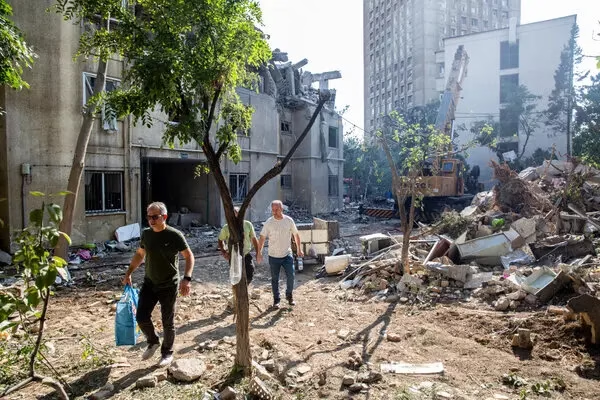
In a recent escalation of regional hostilities, Israel and Iran have once again taken the stage in a dangerous tactical exchange. Iranian-backed drones and missiles struck Israeli positions earlier today, drawing a swift and forceful response from Israel’s military. This latest flare-up follows a tense backdrop of simmering threats, diplomatic deadlock and checkered history between the two nations.
At approximately 3 a.m. local time on June 14, Israel’s military reported that several drone and missile assets fired from Iranian territory or allied proxies targeted its northern frontier. Alarm systems blared in civilian areas of the Galilee, prompting residents to scramble to bomb shelters as air-defense units engaged the incoming threats.
Within hours, the Israeli Air Force (IAF) launched a series of precision strikes deep inside Syria, targeting facilities it claimed were used by Iran’s Revolutionary Guard Corps and militia groups responsible for the morning assault.#
According to military sources, the operation destroyed “multiple launch sites and command nodes,” underscoring Israel’s intent to hit back decisively.
While neither nation risked open war, the incident depicts the fragile battlefield across Syria, Lebanon and Iraq. It is alleged that Iran strategically uses proxies like Hezbollah and Iraqi Shiite militias to extend its influence and to pressure Israel indirectly. From Tel Aviv’s standpoint, preventing Iran from gaining a dominant foothold on its borders remains crucial.
Also read: 👉 Russia’s Largest Retaliatory Strike Hits Kyiv After Ukrainian Drone Attacks
Analysts say Saturday’s incident symbolizes the persistent cat-and-mouse nature of Israel-Iran hostilities. Iran (theologically opposed to Israel’s existence) routinely tests deterrence thresholds. Israel, in turn, has demonstrated a consistent willingness to retaliate beyond its borders to degrade Iranian military infrastructure.
The kinetic exchange comes as both countries quietly wage cyber warfare and intelligence operations against each other. Over the past year, Iran has been blamed for attacks on Israeli water infrastructure, while Israel is believed to have disrupted Iranian nuclear-related systems covertly. Though unseen, these digital confrontations amplify the risk of miscalculation or unanticipated spillover.
International Response and U.S. Position
World powers have reacted with familiar calls for restraint. The United States, Israel’s closest ally, confirmed intelligence-sharing with Tel Aviv and urged diplomatic channels to reopen with Tehran. Washington officials reiterated commitment to Israel’s defense, while also warning Iran against further provocations.
Russia, maintaining ties with Syria’s regime, has offered lukewarm condemnation, urging de-escalation. The United Nations Secretary-General expressed concern over the trend toward mutual strikes, warning that what starts as a tactical skirmish may spiral into broader regional conflict.
For everyday Israelis and Syrians alike, such flare-ups are more than headlines. In northern Israel, residents endured air-raid sirens while in Damascus and surrounding areas, local communities reported missile debris and frightened evacuations. Economically, the skirmish rattled oil markets briefly, with Brent crude prices rising modestly on fears of instability spilling into global supply routes.
Can Diplomacy Prevail?
Despite the current tensions, diplomatic avenues remain obscure. Talks over reviving the Iran nuclear deal remain stalled. And while some countries, including Oman and Qatar, have previously mediated minor de-escalation deals, neither side appears ready to meaningfully compromise.
That said, a cycle of tit-for-tat retaliation carries grave risks. A single misfire or misinterpretation could transform today’s owned aggression into a full-scale confrontation. For now, Israel aims to demonstrate firm deterrence, while Iran seeks to test the limits without crossing a line that provokes overwhelming retaliation.
As the dust settles, both nations will assess the impact. Israel’s military will evaluate whether the Syrian strikes hit their mark and whether air-defenses are holding under pressure. Iran will weigh the benefits of continued strikes against the risk of drawing U.S. or Israeli escalation into its own territory. For observers, the question remains: will this incident pass as another tactical episode or mark a shift toward broader confrontation?

